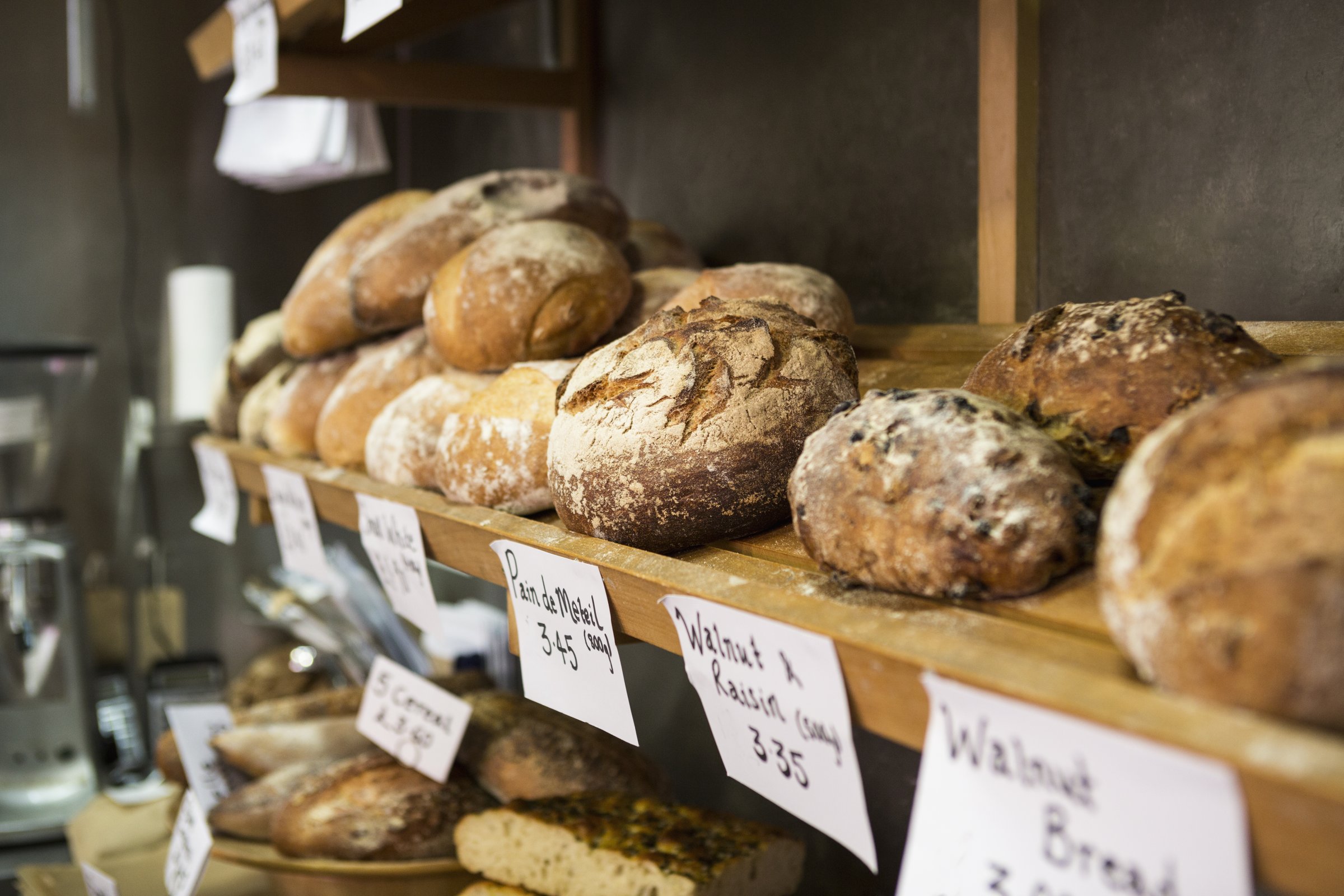
If you’ve got a hankering to make some money, now might be a good time to trademark a brand name for gluten-free salt. If they’re all taken, try gluten-free sugar or gluten-free water. And if they’re gone too, well, there’s still gluten-free shoes.
What’s that? None of those things had gluten to begin with? Well neither did Chobani yogurt or Green Giant vegetables or a whole lot of other foods that have nothing at all to do with wheat or rye or barley—where gluten lives—yet shout about that fact all the same in order to catch a ride on the no-gluten train before the latest nonsensical health fad pulls completely out of the station.
Gluten is to this decade what carbohydrates were to the last one and fat was to the ’80s and ’90s: the bête noir, the bad boy, the cause of all that ails you—and the elimination of which can heal you. As has been clear for a long time, and as the Wall Street Journal reports today in a splendid and about-time piece, a whole lot of that is flat-out hooey, a result of trendiness, smart marketing, Internet gossip and too many people who know too little about nutrition saying too many silly things.
Gluten is not entirely without blame in this, and for some people it comes by its nasty rep rightly. Celiac disease—an immune reaction to gluten that damages the small intestine—is a very real thing, affecting between two and three million Americans. Gluten ataxia is a scarier condition that attacks the brain, leading to problems in gait and muscular control. I’ve seen that up close, in a now-8-year-old nephew who exhibited terrifying symptoms at age 2 and today must avoid foods that contain wheat, barley and rye, as well as any pots or utensils that have come in contact with them, at least until he is done growing and his brain is through developing. Another 18 million Americans may have some lesser forms of gluten sensitivity that cause intestinal discomfort but no damage.
So, crunch the numbers and what do we get? Perhaps 1% of Americans definitely need to be gluten-free and another 5.7% ought to be careful. As for the other 93.3% of us. Break out the Parker House rolls.
But that’s not how things are working out. It’s not clear just when talking heads and bloggers caught the gluten fever, but once they started buzzing about how avoiding the stuff can help you lose weight, fight infertility, overcome fatigue, treat diabetes and—again and always—reduce the symptoms of autism, there was no going back. The website Glutenfree.com offers tips on “Preparing Your Gluten-Free Kitchen,” “Going Gluten-Free For the New Year” and, for nutritionists, “Empowering Clients in Their Gluten-Free Lifestyles.” There’s also “The Gluten-Free Guide for Guys,” because…well, who knows why.
But here’s one reason, at least for marketers: gluten-free is big money. As the Journal reports, U.S. sales of products carrying the gluten free label jumped from $11.5 billion to $23 billion in just the past four years. General Mills alone has added 600 such products to its inventory since 2008, when it first marketed its gluten-free line of Chex cereals. But while the manufacturers are getting rich on the craze, consumers might be getting sick. Not only will gluten-free products do you no good if you’re not gluten-sensitive, taking out the offending ingredient requires replacing it with something else for texture or taste. A whole range of products, including spaghetti, pancake mix and potato chips, therefore have less fiber and protein and more sugar and sodium in their gluten-free formulation than in their supposedly less healthy one.
As a representative of the Center for Science in the Public Interest told the Journal: “The gluten-free fad has actually undermined people’s health because now there are gluten-free varieties of all that junk food. Whether your doughnut is gluten-free or not, it’s still a doughnut.”
The anti-gluties will surely tell you they feel better, fitter, more energetic, that their withdrawn child has suddenly blossomed and that their man—following the Guide For Guys—is healthier and happier. But the placebo effect—even the placebo effect by proxy, seeming to see better health in someone else—is a very real thing. Most of the time, however, it has nothing to do with the perceived cause.
Food fads are nothing new, and they do run their course. Eventually, the gluten-free cookbooks will wind up in the same river of pop detritus as the no-carb wines and the fat-free cookies and the crock pots and fondue sets and woks everyone in America seemed to buy at once in 1988 and stopped using sometime around 1989. When that happens, the people with celiac or gluten ataxia or genuine gluten sensitivity will still have to wrestle with their illnesses, while everyone else returns happily to their baguettes—searching for the next big thing to exorcise.
More Must-Reads from TIME
- Donald Trump Is TIME's 2024 Person of the Year
- Why We Chose Trump as Person of the Year
- Is Intermittent Fasting Good or Bad for You?
- The 100 Must-Read Books of 2024
- The 20 Best Christmas TV Episodes
- Column: If Optimism Feels Ridiculous Now, Try Hope
- The Future of Climate Action Is Trade Policy
- Merle Bombardieri Is Helping People Make the Baby Decision
Write to Jeffrey Kluger at jeffrey.kluger@time.com